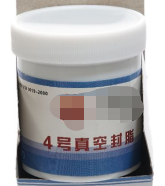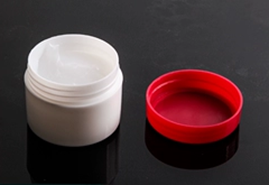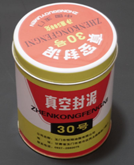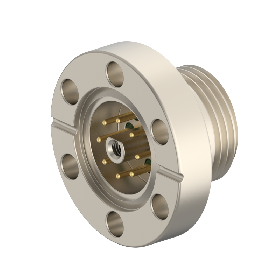Vacuum sealing auxiliary materials are mainly divided into vacuum sealing wax, vacuum sealing grease, vacuum sealing mud and vacuum sealing paint according to the vacuum sealing position and vacuum degree.
Vacuum sealing wax is made of organic materials such as asphalt, shellac, and propolis, and is used to seal or fill small leaks at joints that are detachable but immovable. The softening temperature of the vacuum sealing wax is 50~100℃, and it is heated and softened when it is used, and the saturated vapor pressure is below 1.3×10-4Pa. Commercial sealing waxes are available in No. 20, No. 50, and No. 80. The larger the label, the greater the viscosity.


Vacuum sealing grease is mainly used for sealing and lubricating the grinding mouth, stopcock and movable connection of the vacuum system. It is a grease-like substance. Generally, the working temperature of vacuum grease is relatively low, and the temperature range of vacuum grease is determined by its viscosity. Viscosity is also a very important parameter of vacuum grease. Generally, the viscosity of the grease should not be too large to ensure that the seal can move freely. However, if the viscosity is too low, it will cause the grease to leak into the vacuum system under the action of the external atmospheric pressure. Therefore, the selection of vacuum grease should be comprehensively considered according to the use situation and working temperature. For example, soft and low-viscosity grease can be used at room temperature in winter; hard and high-viscosity grease can be selected at room temperature in summer; No. 4 grease should be used at higher working temperature For publicity, grease should be applied less and evenly during use to avoid contamination of the system.

Vacuum sealing mud is a kind of sludge made by mixing paraffin wax with high viscosity and low vapor pressure and kaolin as the main raw materials. It has good plasticity and is easy to shape. Its saturated vapor pressure is not more than 6.6×10-2Pa, and its use temperature is below 35℃. Suitable for parts where the low vacuum system is slightly vibrated and frequently disassembled, or for temporary sealing. Vacuum sealing mud has good adhesion to metal and non-metal.
The saturated vapor pressure of the vacuum sealing paint is low (about 1×10-4Pa), and it can withstand temperatures below 200°C after drying and hardening, and it also has good corrosion resistance. Vacuum paint (such as purple paint and glycolphthalein resin paint) can be brushed or sprayed on the surface of the parts and the tiny leaks in the welds to stop leaks or prevent H2 from penetrating into the metal walls. It should be noted that during use, the paint cannot be applied when the system is in a vacuum state, so as not to be atmospheric pressure into the system.
(huiputech)

Z-S-CF16-0810S,Z-S-CF16-0810M,Z-S-CF16-0810L
2025-11-04
Contact : Martin
Tel : +86 18588203671
Mobile : +86 18588203671
Fax : +86 18588203671
Email : Martin@huiputech.com
Address : 3/F, Building F, GLORY Technology Park, No.2 Baolong 5th Road, Longgang District, Shenzhen, Guangdong, China.